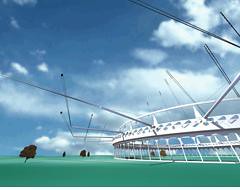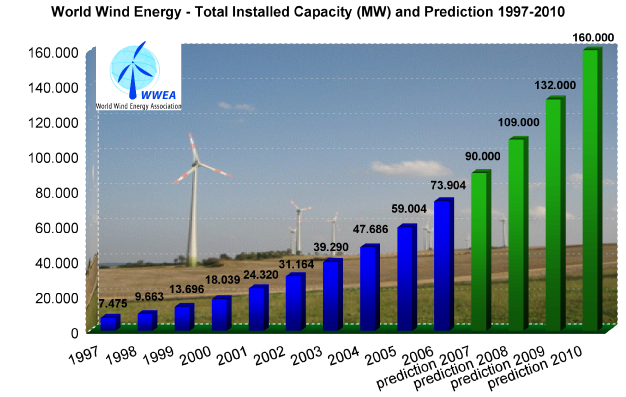The kitegen system could radically improve the situation a promising outlook for wind power. Winds are stronger and steadier at 800meter and up. Building on mountains and hills would provide access to even stronger and steadier winds. Winds that are up to 24 times stronger than current winds at 80 meter altitudes. The Kitegen system would have to be adapted to pull energy from gale force winds on mountains. I believe that the Kitegen system is suitable for using many kites to pull a large ring shaped turbine.
Wind speeds on average in the Himalayas are 75mph (33m/s) and can reach more than 100mph (45 m/s). The windiest place in the world is Mount Washington (1,918m) in New Hampshire, USA. On 12th April 1934 a surface wind speed of 231mph was recorded.
Mountains cover 54% of Asia, 36% of North America, 25% of Europe, 22% of South America, 17% of Australia, and 3% of Africa. As a whole, 24% of the Earth’s land mass is mountainous. The Himalayas average 5 km above sea level, while the Andes average 4 km. Most other mountain ranges average 2 – 2.5 km.
Kitegen has wind data showing that at 5600 meters of altitude there are many locations with 15-20 m/s wind and at 10500 meters there is 35-45m/s wind Accessing those winds with kitegen systems on mountains would increase wind power by 3 to 6 times over the four times improvement that 800 meter winds have over 80 meter winds. So 10,500 meter winds are 24 times stronger than 80 meter winds.

A large kitegen carousel system. The track could run around the top of a mountain like a necklace.

Blue Ridge mountains in Virginia
Conventional New Wind Energy Forecast
I believe that Nuclear power can be scaled up faster than wind. However, wind power is doing quite well and it is and will be significant.
73,904 MW total installations as of 2006, expect 90,000 MW by the end of this year (2007). This 2007 total is equal to about 30GW of nuclear installation because of operating load. Germany has over 18,000 turbines with avg size of a little over 1MW. the latest installations are 5MW and 6MW units. By 2010, the World Wind Energy Association expects 160GW of capacity to be installed worldwide.
The 28GW build rate at the end of 2010 carrying forward would add 280GW from 2011-2020. After 2010 the size of new wind turbines will be 7.5-10MW and probably still getting bigger.

Wind past and predicted by industry
http://en.wikipedia.org/wiki/Wind_power
MW of installed capacity
2005 2006 latest
1 Germany 18,415 20,622 21,283
2 Spain 10,028 11,615 12,801
3 United States 9,149 11,603 12,634
4 India 4,430 6,270 7,231
5 Denmark 3,136 3,140
6 China 1,260 2,604 2,956
7 Italy 1,718 2,123
8 United Kingdom 1,332 1,963 2,191
9 Portugal 1,022 1,716 1,874
10 Canada 683 1,459 1,670
11 France 757 1,567
12 Netherlands 1,219 1,560
13 Japan 1,061 1,394
14 Austria 819 965
15 Australia 708 817
FURTHER READING
My previous article on Kitegen

Brian Wang is a Futurist Thought Leader and a popular Science blogger with 1 million readers per month. His blog Nextbigfuture.com is ranked #1 Science News Blog. It covers many disruptive technology and trends including Space, Robotics, Artificial Intelligence, Medicine, Anti-aging Biotechnology, and Nanotechnology.
Known for identifying cutting edge technologies, he is currently a Co-Founder of a startup and fundraiser for high potential early-stage companies. He is the Head of Research for Allocations for deep technology investments and an Angel Investor at Space Angels.
A frequent speaker at corporations, he has been a TEDx speaker, a Singularity University speaker and guest at numerous interviews for radio and podcasts. He is open to public speaking and advising engagements.


Comments are closed.